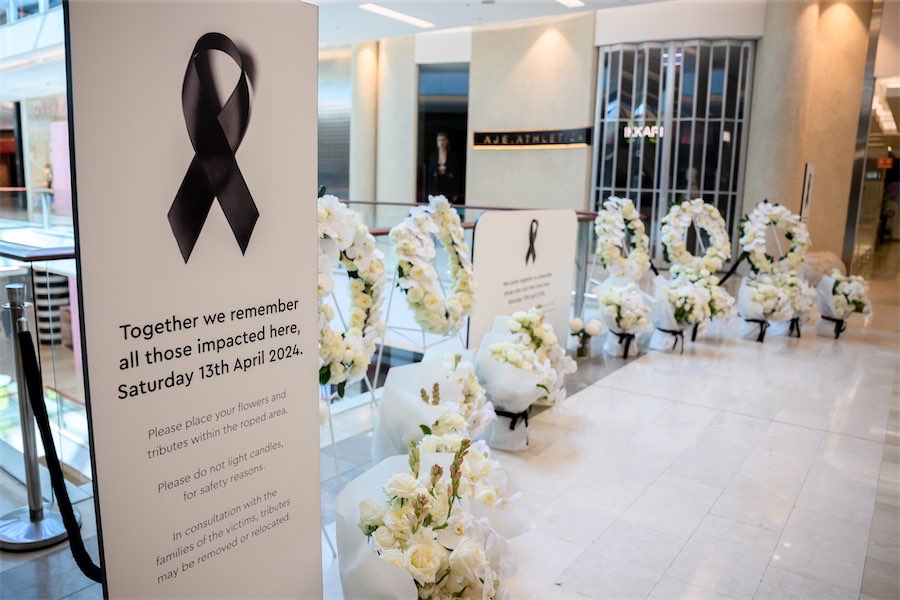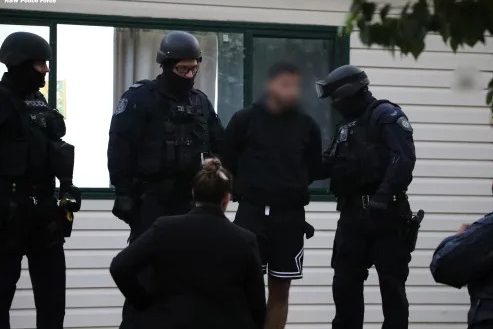
THE crime-fighting canines, trusted to sniff Australia to safety, receive their scent-detection training in Canberra.
At least every six months, the National Canine Operation Centre – at the AFP’s Majura complex – runs a three-month training course to hone the detective skills of 12, mostly labrador, puppies.
Mark Rice, team leader of training and development, says labradors are a good all rounder.
“We mostly have labradors here that come through the Australian Border Force’s breeding program,” he says.
“A dog has to have the maturity and all of its hunt drive in the right place to be able to focus on the work it’s doing, so we can train them from 10 months onwards.”
They’re hunting dogs genetically and want to use their nose, says Mark, so they’re taught how to channel that hunt into finding a specific odour, from explosives to firearms, drugs, currency and technology.
“We use a rolled up hand towel, and play with them and build their possession for that toy,” he says.
“That’s from when they’re six weeks old. When it comes time to train, all we do is we put that towel in a big vault with the odour we want them to find, and the smell permeates.”
When the dog plays with the towel, it then associates the smell with its reward – and the difficulty gets harder with the towel hidden for the dog to sniff out and find.
Finally, the dog is trained to give a response when they locate the towel.
“Sit down passively and stare at the point where the odour is the strongest,” says Mark, so that he knows exactly where to begin searching.

Only the top one per cent of dogs are used in technology detection, says Mark.
“Of our disciplines, that’s the hardest for the dogs.”
“The difference between the plastic around us in the world, and the plastic on an SD card or USB, is its fire-retardant ability. That’s what we train,” he says.
The more energetic dogs, with “a higher work ethic and higher drive”, are delegated to drugs, firearms and currency, leaving the calmer, methodical dogs for explosives.
“Our explosive dogs, we don’t want them bashing into things, knocking things over, being reckless and we don’t want them missing areas either,” Mark says.
“The dog’s ability to distinguish between odours and find their target odours – even when we have distracting odours in place – is phenomenal.”
Mark says they prepare while the dogs are still in training, with distractions of food, other dogs, cat odours and people, but mistakes can still be made.
“There are dogs every day getting trained off a scent they aren’t meant to find. What we’re doing is finding what those odours are, and we are taking them away as targets.”
Mark says a three-month basic course is just the basics, searching in a sequence and finding things within limited concealments.
“It’s not all doom and gloom. If they don’t quite make the rigours of the training program they’ll either go off to another law-enforcement agency where they can work more one on one, or they’ll end up back in their foster carer’s home,” he says.
A now two-year-old cream/white labrador named Dove was unsuccessful in training.
“Dove was one that was just happy to take or leave things, so she became a demonstration and pat dog. We take her out to engage with the public, but even watching her work is pretty phenomenal – and that’s not one of our good dogs,” says Mark.
He says they’re like athletes – if a dog requires a specific diet then there is no expense spared, and Emily O’Donohue, the kennel development manager at the Majura facility, is a vet nurse herself.
Working dogs are expected to be switched on 40+ hours a week, but have heated kennels to rest in on their weekends and days off.
Throughout a dog’s career, the AFP stresses the bond of having one handler.
“You learn what the dog’s behaviours are, and pick up on when those behaviours are different. So, through repetition and working with that dog, a handler knows what the dog’s signals and behaviours are, which is really important to the team being functional and effective,” says Mark.
And, retirement comes once a dog reaches eight-years-old.
“We feel like they’ve served their purpose by that stage. At the end of it all we want to see is them go on a couch, eat snacks and be normal. Mostly they get retired to their handler who has spent years working with them and built that bond,” he says.
Who can be trusted?
In a world of spin and confusion, there’s never been a more important time to support independent journalism in Canberra.
If you trust our work online and want to enforce the power of independent voices, I invite you to make a small contribution.
Every dollar of support is invested back into our journalism to help keep citynews.com.au strong and free.
Thank you,
Ian Meikle, editor





Leave a Reply